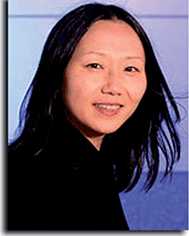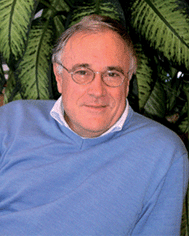Themed issue on “organic optoelectronic materials”
Wenping
Hu
a,
Zhenan
Bao
b and
Klaus
Muellen
c
aInstitute of Chemistry, Chinese Academy of Sciences, Beijing 100190, China
bDepartment of Chemical Engineering, Stanford University, California 94305, U. S. A.
cMax Planck Institute for Polymer Research, Mainz D-55128, Germany
 | ||
| Fig. 1 The distributions of published papers by year using “organic electronics or photonics”, “OLED”, “OFET” and “OSC” as query keywords to search the Web of Science. | ||
The aim of this current themed issue focuses on novel organic and polymer materials with high electroluminescent efficiency for OLEDs, with high quantum efficiency for OSCs, with high mobility for OFETs, and so on. As a highly interdisciplinary science, the research and development of organic optoelectronic materials continually derives ideas, methods, and technologies from other research fields. Therefore, knowledge and techniques derived from chemistry, physics, materials science, semiconductors, electronics, nanotechnology and biology have been adopted in the design and development of organic optoelectronic materials.
Last but not least, this themed issue of Journal of Materials Chemistry is dedicated to one of the pioneers of the field, Professor Daoben Zhu, on the occasion of his 70th birthday. Professor Zhu is a Professor of the Institute of Chemistry, Chinese Academy of Sciences (ICCAS). He was born in 1942 in Shanghai, China. He finished high school in Shanghai and then graduated in 1968 from East China University of Science and Technology with his Bachelor’s and Master’s degrees. In the same year he joined the Institute of Chemistry, Chinese Academy of Sciences. As a visiting scientist, he performed research with Professor Heinz Staab in Max-Planck Institute for Medical Research in Heidelberg during 1977–1979 and 1985–1986. Professor Zhu pioneered his study in organic crystals with high conductivity in 1970s with Professor Renyuan Qian. Since the 1990s, he has been focusing on fullerene chemistry, molecular materials and devices. He served as vice-director (1988–1992), director (1992–2000) of ICCAS and vice-president of National Natural Science Foundation of China (2000–2008), and was selected as an academician of CAS in 1997. Prof. Zhu's current research interests focus on molecular materials and devices. His creativity and unconditional love for science have great impact beyond his over 800 published papers, and a tremendous influence on his former students, post-docs, collaborators, colleagues and friends, many of whom are leading the research of organic optoelectronics. The breadth of this impact is also evident from the diversity of the 25 papers contributed to this issue by them, which cover various areas of organic optoelectronics. Their contribution to this issue is an acknowledgement of Professor Zhu's pioneering role as a scientist in this field.
Happy Birthday, Daoben, and many more to come!
Wenping Hu
Zhenan Bao
Klaus Muellen
| This journal is © The Royal Society of Chemistry 2012 |



